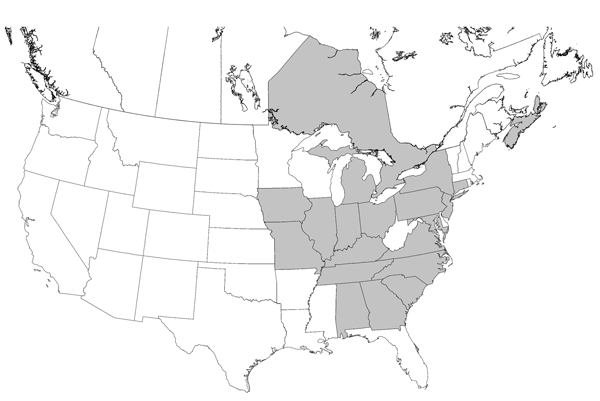Volume 12, Number 3—March 2006
Research
Canine Visceral Leishmaniasis, United States and Canada, 2000–2003
Figure 1

Figure 1. Distribution of hunt clubs with confirmed cases of visceral leishmaniasis, United States and Canada. States in which hunt clubs or kennels had >1 dog infected with Leishmania infantum are shaded. Leishmania-positive foxhounds were also found in Nova Scotia and Ontario.
Page created: January 27, 2012
Page updated: January 27, 2012
Page reviewed: January 27, 2012
The conclusions, findings, and opinions expressed by authors contributing to this journal do not necessarily reflect the official position of the U.S. Department of Health and Human Services, the Public Health Service, the Centers for Disease Control and Prevention, or the authors' affiliated institutions. Use of trade names is for identification only and does not imply endorsement by any of the groups named above.